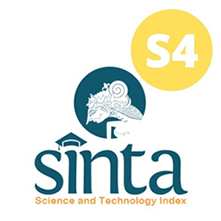IOT-Based Human Vital Sign Monitoring Tool Using Telegram Notifications (BPM and Respiration Rate Parameters)
Abstract
Vital signs play a crucial role in monitoring the progress of adult or pediatric patients during hospitalization, as they enable prompt detection of delayed recovery or adverse events. Vital signs are measured to obtain fundamental indicators of the patient's health status. The measurement of vital signs, including blood pressure, temperature, pulse, and respiratory rate, is the most common intervention in hospital medicine. Advanced monitoring systems combine clinical and technological aspects to deliver innovative healthcare outcomes. Remote patient monitoring systems are increasingly becoming the cornerstone of healthcare delivery, replacing traditional manual recording with computer and smartphone-based electronic recording as a versatile and innovative health monitoring system. This study aims to design a Vital Sign Monitoring Parameter BPM and RR tool with Notifications via the IoT-Based Telegram application. The tool enables the monitoring of vital signs, particularly BPM and RR, regardless of the patient's location and at any given time. This allows doctors, health workers, and patients to stay informed about their health condition. Real-time display of vital sign data is available through the TFT LCD screen, and the data from the screen can be accessed via Telegram. The Telegram application will send notifications in the event of abnormal patient conditions. MAX30100, a digital sensor for detecting breathing rate and heart rate, is utilized in this research. Furthermore, the data obtained shows errors that are within the allowable limits for each parameter. The difference between the heart rate readings and the respiratory rate values on the device and the patient monitor is 1.14% for heart rate and 0.84% for respiratory rate. This study indicates that it is time to monitor vital signs that can be seen remotely and have a system that is an inexpensive and easy-to-operate device for health workers without interfering with activities of daily living.

This work is licensed under a Creative Commons Attribution-ShareAlike 4.0 International License.
Authors who publish with this journal agree to the following terms:
- Authors retain copyright and grant the journal right of first publication with the work simultaneously licensed under a Creative Commons Attribution License that allows others to share the work with an acknowledgement of the work's authorship and initial publication in this journal.
- Authors are able to enter into separate, additional contractual arrangements for the non-exclusive distribution of the journal's published version of the work (e.g., post it to an institutional repository or publish it in a book), with an acknowledgement of its initial publication in this journal.
- Authors are permitted and encouraged to post their work online (e.g., in institutional repositories or on their website) prior to and during the submission process, as it can lead to productive exchanges, as well as earlier and greater citation of published work (See The Effect of Open Access).











